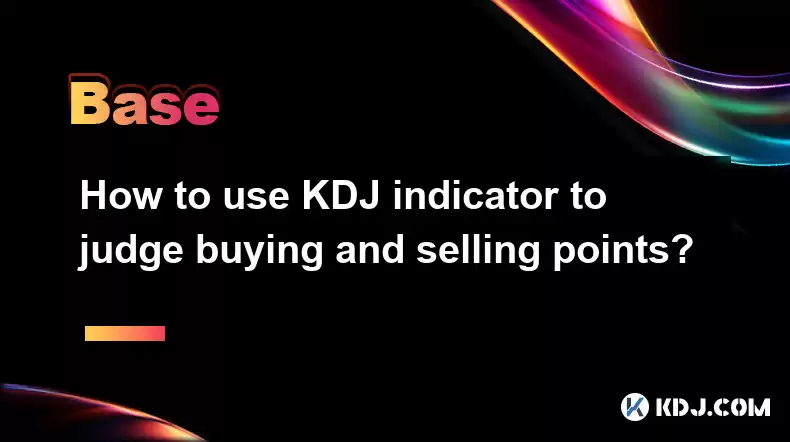-
 Bitcoin
Bitcoin $113400
-0.78% -
 Ethereum
Ethereum $3572
-2.11% -
 XRP
XRP $2.908
-4.07% -
 Tether USDt
Tether USDt $0.9999
0.00% -
 BNB
BNB $751.0
-1.27% -
 Solana
Solana $162.3
-3.12% -
 USDC
USDC $0.9998
-0.01% -
 TRON
TRON $0.3319
-0.54% -
 Dogecoin
Dogecoin $0.1963
-4.68% -
 Cardano
Cardano $0.7128
-4.47% -
 Hyperliquid
Hyperliquid $37.14
-2.57% -
 Stellar
Stellar $0.3858
-4.90% -
 Sui
Sui $3.341
-3.86% -
 Bitcoin Cash
Bitcoin Cash $554.6
-1.94% -
 Chainlink
Chainlink $16.10
-3.77% -
 Hedera
Hedera $0.2338
-4.24% -
 Ethena USDe
Ethena USDe $1.001
0.00% -
 Avalanche
Avalanche $21.66
-4.72% -
 Litecoin
Litecoin $117.8
-2.92% -
 UNUS SED LEO
UNUS SED LEO $9.002
0.08% -
 Toncoin
Toncoin $3.156
-6.13% -
 Shiba Inu
Shiba Inu $0.00001192
-3.09% -
 Uniswap
Uniswap $9.411
-3.25% -
 Polkadot
Polkadot $3.562
-2.50% -
 Dai
Dai $0.9999
0.00% -
 Monero
Monero $288.9
-4.05% -
 Bitget Token
Bitget Token $4.274
-1.88% -
 Cronos
Cronos $0.1362
-1.79% -
 Pepe
Pepe $0.0...09999
-4.55% -
 Aave
Aave $252.7
-2.97%
How to use KDJ indicator to judge buying and selling points?
The KDJ indicator, used by crypto traders, identifies buying and selling points through overbought and oversold conditions, with settings adjustable for different timeframes.
Apr 10, 2025 at 03:35 am

The KDJ indicator, also known as the Stochastic Oscillator, is a popular tool used by cryptocurrency traders to identify potential buying and selling points. This momentum indicator helps traders understand overbought and oversold conditions in the market, enabling them to make informed decisions. In this article, we will explore how to use the KDJ indicator effectively to judge buying and selling points in the cryptocurrency market.
Understanding the KDJ Indicator
The KDJ indicator consists of three lines: the K line, the D line, and the J line. The K line represents the fastest moving line, the D line is a slower moving average of the K line, and the J line is used to confirm signals. The values of these lines range from 0 to 100, with readings above 80 indicating overbought conditions and readings below 20 indicating oversold conditions.
Setting Up the KDJ Indicator
To use the KDJ indicator effectively, you need to set it up on your trading platform. Most trading platforms allow you to add the KDJ indicator to your charts easily. Here are the steps to set up the KDJ indicator:
- Open your trading platform and select the cryptocurrency pair you want to analyze.
- Navigate to the indicators section and search for the KDJ or Stochastic Oscillator.
- Add the KDJ indicator to your chart and adjust the settings if necessary. The default settings are usually K=9, D=3, and J=3, but you can experiment with different settings to find what works best for you.
Identifying Buying Points
Identifying buying points using the KDJ indicator involves looking for signals that indicate the market is oversold and likely to rebound. Here are the steps to identify buying points:
- Look for the KDJ lines to enter the oversold zone, which is typically below 20.
- Watch for the K line to cross above the D line while both are in the oversold zone. This is known as a bullish crossover and indicates a potential buying opportunity.
- Confirm the signal by observing the J line. If the J line is also rising and moving above the K and D lines, it strengthens the bullish signal.
Identifying Selling Points
Identifying selling points using the KDJ indicator involves looking for signals that indicate the market is overbought and likely to decline. Here are the steps to identify selling points:
- Look for the KDJ lines to enter the overbought zone, which is typically above 80.
- Watch for the K line to cross below the D line while both are in the overbought zone. This is known as a bearish crossover and indicates a potential selling opportunity.
- Confirm the signal by observing the J line. If the J line is also falling and moving below the K and D lines, it strengthens the bearish signal.
Using KDJ Divergence
KDJ divergence occurs when the price of a cryptocurrency moves in the opposite direction of the KDJ indicator. This can be a powerful signal for potential reversals. Here's how to use KDJ divergence to judge buying and selling points:
- Bullish Divergence: If the price of a cryptocurrency is making lower lows while the KDJ indicator is making higher lows, it indicates a potential bullish reversal. This could be a signal to buy.
- Bearish Divergence: If the price of a cryptocurrency is making higher highs while the KDJ indicator is making lower highs, it indicates a potential bearish reversal. This could be a signal to sell.
Combining KDJ with Other Indicators
While the KDJ indicator can be a powerful tool on its own, combining it with other indicators can enhance its effectiveness. Here are some popular indicators to use alongside the KDJ:
- Moving Averages: Using moving averages can help confirm trends identified by the KDJ indicator. For example, if the KDJ indicates a bullish signal and the price is above a key moving average, it strengthens the buying signal.
- Relative Strength Index (RSI): The RSI is another momentum indicator that can be used to confirm overbought and oversold conditions identified by the KDJ.
- MACD (Moving Average Convergence Divergence): The MACD can help confirm trend changes and momentum shifts identified by the KDJ.
Practical Example of Using KDJ Indicator
Let's walk through a practical example of using the KDJ indicator to judge a buying point for Bitcoin (BTC).
- Suppose the price of Bitcoin is in a downtrend and the KDJ lines enter the oversold zone below 20.
- The K line crosses above the D line, indicating a bullish crossover.
- The J line is also rising and moving above the K and D lines, confirming the bullish signal.
- At this point, a trader might consider buying Bitcoin, expecting a potential rebound in the price.
Avoiding False Signals
One of the challenges of using the KDJ indicator is avoiding false signals. Here are some tips to help you avoid false signals:
- Wait for Confirmation: Always wait for the J line to confirm the signal given by the K and D lines. If the J line does not move in the expected direction, the signal might be false.
- Use Multiple Timeframes: Analyzing the KDJ indicator on multiple timeframes can help confirm signals. For example, if a bullish signal is seen on both the daily and hourly charts, it is more likely to be valid.
- Combine with Other Indicators: As mentioned earlier, using the KDJ indicator in conjunction with other indicators can help filter out false signals.
Adjusting KDJ Settings
The default settings for the KDJ indicator are K=9, D=3, and J=3, but these can be adjusted to suit different trading styles and timeframes. Here are some tips for adjusting the KDJ settings:
- Shorter Timeframes: For shorter timeframes, you might want to use faster settings, such as K=5, D=3, and J=3, to capture more frequent signals.
- Longer Timeframes: For longer timeframes, you might want to use slower settings, such as K=14, D=3, and J=3, to capture more reliable signals.
- Experimentation: It's important to experiment with different settings to find what works best for your trading strategy.
Trading Strategies Using KDJ Indicator
Here are some trading strategies that incorporate the KDJ indicator:
- Trend Following Strategy: Use the KDJ indicator to identify buying and selling points in the direction of the overall trend. For example, if the market is in an uptrend, use bullish KDJ signals to enter long positions.
- Reversal Strategy: Use KDJ divergence to identify potential trend reversals. For example, if you spot a bullish divergence, you might enter a long position expecting a reversal to the upside.
- Breakout Strategy: Use the KDJ indicator to confirm breakouts. For example, if the price breaks above a key resistance level and the KDJ indicator gives a bullish signal, it could confirm a breakout and suggest a buying opportunity.
Monitoring KDJ Signals
Monitoring KDJ signals effectively is crucial for successful trading. Here are some tips for monitoring KDJ signals:
- Set Alerts: Many trading platforms allow you to set alerts for when the KDJ lines enter specific zones or when crossovers occur. This can help you stay on top of potential trading opportunities.
- Regular Review: Regularly review your charts to monitor the KDJ indicator and other relevant indicators. This will help you stay informed about market conditions and potential signals.
- Keep a Trading Journal: Keeping a trading journal can help you track your KDJ signals and assess their effectiveness over time. This can help you refine your trading strategy.
Common Questions Related to Using KDJ Indicator
Q: What is the KDJ indicator and how does it work?
A: The KDJ indicator is a momentum oscillator used to identify overbought and oversold conditions in the market. It consists of three lines: the K line, the D line, and the J line. The K line is the fastest moving line, the D line is a slower moving average of the K line, and the J line is used to confirm signals. The KDJ indicator helps traders identify potential buying and selling points based on these lines crossing over each other and entering specific zones.
Q: How can I set up the KDJ indicator on my trading platform?
A: To set up the KDJ indicator on your trading platform, follow these steps:
- Open your trading platform and select the cryptocurrency pair you want to analyze.
- Navigate to the indicators section and search for the KDJ or Stochastic Oscillator.
- Add the KDJ indicator to your chart and adjust the settings if necessary. The default settings are usually K=9, D=3, and J=3, but you can experiment with different settings to find what works best for you.
Q: How do I identify buying points using the KDJ indicator?
A: To identify buying points using the KDJ indicator, follow these steps:
- Look for the KDJ lines to enter the oversold zone, which is typically below 20.
- Watch for the K line to cross above the D line while both are in the oversold zone. This is known as a bullish crossover and indicates a potential buying opportunity.
- Confirm the signal by observing the J line. If the J line is also rising and moving above the K and D lines, it strengthens the bullish signal.
Q: How do I identify selling points using the KDJ indicator?
A: To identify selling points using the KDJ indicator, follow these steps:
- Look for the KDJ lines to enter the overbought zone, which is typically above 80.
- Watch for the K line to cross below the D line while both are in the overbought zone. This is known as a bearish crossover and indicates a potential selling opportunity.
- Confirm the signal by observing the J line. If the J line is also falling and moving below the K and D lines, it strengthens the bearish signal.
Q: What is KDJ divergence and how can I use it to judge buying and selling points?
A: KDJ divergence occurs when the price of a cryptocurrency moves in the opposite direction of the KDJ indicator. It can be used to identify potential reversals. Here's how to use KDJ divergence:
- Bullish Divergence: If the price of a cryptocurrency is making lower lows while the KDJ indicator is making higher lows, it indicates a potential bullish reversal. This could be a signal to buy.
- Bearish Divergence: If the price of a cryptocurrency is making higher highs while the KDJ indicator is making lower highs, it indicates a potential bearish reversal. This could be a signal to sell.
Q: How can I combine the KDJ indicator with other indicators for better results?
A: Combining the KDJ indicator with other indicators can enhance its effectiveness. Here are some popular indicators to use alongside the KDJ:
- Moving Averages: Using moving averages can help confirm trends identified by the KDJ indicator. For example, if the KDJ indicates a bullish signal and the price is above a key moving average, it strengthens the buying signal.
- Relative Strength Index (RSI): The RSI is another momentum indicator that can be used to confirm overbought and oversold conditions identified by the KDJ.
- MACD (Moving Average Convergence Divergence): The MACD can help confirm trend changes and momentum shifts identified by the KDJ.
Q: How can I avoid false signals when using the KDJ indicator?
A: To avoid false signals when using the KDJ indicator, consider the following tips:
- Wait for Confirmation: Always wait for the J line to confirm the signal given by the K and D lines. If the J line does not move in the expected direction, the signal might be false.
- Use Multiple Timeframes: Analyzing the KDJ indicator on multiple timeframes can help confirm signals. For example, if a bullish signal is seen on both the daily and hourly charts, it is more likely to be valid.
- Combine with Other Indicators: Using the KDJ indicator in conjunction with other indicators can help filter out false signals.
Q: How can I adjust the KDJ settings for different trading styles and timeframes?
A: The default settings for the KDJ indicator are K=9, D=3, and J=3, but these can be adjusted to suit different trading styles and timeframes. Here are some tips for adjusting the KDJ settings:
- Shorter Timeframes: For shorter timeframes, you might want to use faster settings, such as K=5, D=3, and J=3, to capture more frequent signals.
- Longer Timeframes: For longer timeframes, you might want to use slower settings, such as K=14, D=3, and J=3, to capture more reliable signals.
- Experimentation: It's important to experiment with different settings to find what works best for your trading strategy.
Q: What are some trading strategies that incorporate the KDJ indicator?
A: Here are some trading strategies that incorporate the KDJ indicator:
- Trend Following Strategy: Use the KDJ indicator to identify buying and selling points in the direction of the overall trend. For example, if the market is in an uptrend, use bullish KDJ signals to enter long positions.
- Reversal Strategy: Use KDJ divergence to identify potential trend reversals. For example, if you spot a bullish divergence, you might enter a long position expecting a reversal to the upside.
- Breakout Strategy: Use the KDJ indicator to confirm breakouts. For example, if the price breaks above a key resistance level and the KDJ indicator gives a bullish signal, it could confirm a breakout and suggest a buying opportunity.
Q: How can I effectively monitor KDJ signals?
A: Monitoring KDJ signals effectively is crucial for successful trading. Here are some tips for monitoring KDJ signals:
- Set Alerts: Many trading platforms allow you to set alerts for when the KDJ lines enter specific zones or when crossovers occur. This can help you stay on top of potential trading opportunities.
- Regular Review: Regularly review your charts to monitor the KDJ indicator and other relevant indicators. This will help you stay informed about market conditions and potential signals.
- Keep a Trading Journal: Keeping a trading journal can help you track your KDJ signals and assess their effectiveness over time. This can help you refine your trading strategy.
Disclaimer:info@kdj.com
The information provided is not trading advice. kdj.com does not assume any responsibility for any investments made based on the information provided in this article. Cryptocurrencies are highly volatile and it is highly recommended that you invest with caution after thorough research!
If you believe that the content used on this website infringes your copyright, please contact us immediately (info@kdj.com) and we will delete it promptly.
- Coinbase, Financing, and the Crypto Market: Navigating Choppy Waters in NYC Style
- 2025-08-06 12:50:11
- Bitcoin in Indonesia: Crypto Education and Economic Strategy
- 2025-08-06 12:50:11
- DeriW Mainnet: Zero Gas Fees Revolutionize On-Chain Derivatives Trading
- 2025-08-06 10:30:11
- IOTA, Cloud Mining, and Eco-Friendly Crypto: A New York Investor's Take
- 2025-08-06 10:30:11
- Kaspa (KAS) Price Prediction: August 6 - Will It Break Free?
- 2025-08-06 10:50:12
- Pension Funds, Bitcoin ETFs, and Exposure: A New Era of Institutional Crypto Adoption
- 2025-08-06 12:55:12
Related knowledge

What is the difference between CeFi and DeFi?
Jul 22,2025 at 12:28am
Understanding CeFi and DeFiIn the world of cryptocurrency, CeFi (Centralized Finance) and DeFi (Decentralized Finance) represent two distinct financia...

How to qualify for potential crypto airdrops?
Jul 23,2025 at 06:49am
Understanding What Crypto Airdrops AreCrypto airdrops refer to the distribution of free tokens or coins to a large number of wallet addresses, often u...

What is a crypto "airdrop farmer"?
Jul 24,2025 at 10:22pm
Understanding the Role of a Crypto 'Airdrop Farmer'A crypto 'airdrop farmer' refers to an individual who actively participates in cryptocurrency airdr...

What is the difference between a sidechain and a Layer 2?
Jul 20,2025 at 11:35pm
Understanding the Concept of SidechainsA sidechain is a separate blockchain that runs parallel to the main blockchain, typically the mainnet of a cryp...

What is the Inter-Blockchain Communication Protocol (IBC)?
Jul 19,2025 at 10:43am
Understanding the Inter-Blockchain Communication Protocol (IBC)The Inter-Blockchain Communication Protocol (IBC) is a cross-chain communication protoc...

How does sharding improve scalability?
Jul 20,2025 at 01:21am
Understanding Sharding in BlockchainSharding is a database partitioning technique that is increasingly being adopted in blockchain technology to enhan...

What is the difference between CeFi and DeFi?
Jul 22,2025 at 12:28am
Understanding CeFi and DeFiIn the world of cryptocurrency, CeFi (Centralized Finance) and DeFi (Decentralized Finance) represent two distinct financia...

How to qualify for potential crypto airdrops?
Jul 23,2025 at 06:49am
Understanding What Crypto Airdrops AreCrypto airdrops refer to the distribution of free tokens or coins to a large number of wallet addresses, often u...

What is a crypto "airdrop farmer"?
Jul 24,2025 at 10:22pm
Understanding the Role of a Crypto 'Airdrop Farmer'A crypto 'airdrop farmer' refers to an individual who actively participates in cryptocurrency airdr...

What is the difference between a sidechain and a Layer 2?
Jul 20,2025 at 11:35pm
Understanding the Concept of SidechainsA sidechain is a separate blockchain that runs parallel to the main blockchain, typically the mainnet of a cryp...

What is the Inter-Blockchain Communication Protocol (IBC)?
Jul 19,2025 at 10:43am
Understanding the Inter-Blockchain Communication Protocol (IBC)The Inter-Blockchain Communication Protocol (IBC) is a cross-chain communication protoc...

How does sharding improve scalability?
Jul 20,2025 at 01:21am
Understanding Sharding in BlockchainSharding is a database partitioning technique that is increasingly being adopted in blockchain technology to enhan...
See all articles

























































































